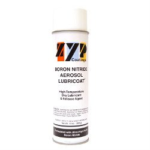One of the most confusing issues in the industry is mold prep. Part of this confusion has come from the elimination of some products and the decision on what to substitute.
One of the recent questions I've had (and hear often) is What the difference is between the Hotline primers? These are used on your kiln shelves and
some molds. Here's a breakdown:
The Original

Used according to directions, shelf primer is the best insurance that your fused work will not stick to the kiln shelf. It's a high temperature, low-fluxing clay and alumina mixture formulation which contains suspension agents and a color-coded dye that burns off at 800 degrees F (427 degrees C).
Primo Primer

Hotline Primo Primer fires to 1550 degrees F (843 degrees C) and higher. Glass does not stick to the shelf. Primer does not stick to the glass. It removes from shelf after firing by brushing or by wiping with a damp sponge. No more tedious and messy scraping. Packed in easy access plastic containers.
Hi-Fire

A special formulation of alumina and low-fluxing clays developed to withstand the high kiln temperatures required for raking. Contains a dye which burns off when firing. It leaves an excellent smooth finish between the glass and kiln shelf. Hi-Fire Shelf Primer is also excellent for coating mandrels for beadmaking.
HOW TO PREPARE DIFFERENT TYPES OF MOLDS
Bullseye Molds
Can generally be prepped with kiln wash/primer.
Colour de Verre Molds



You can tell if you have a Colour de Verre mold because they put their name into the mold on the underside.

These can be primed with
Hotline Primo Primer or
ZYP. Colour de Verre has some great information about
preparing molds with Primo Primer and
with Zyp.
Creative Paradise Molds



Creative Paradise recommends that you use MR97/
ZYP for their molds. You can tell if your mold is from Creative Paradise because it says CPI right on the underside of the mold. Do not use Slide or kiln wash.
Stainless Steel Molds



FIRST: If the mold is new, it might still have the oil on it from production. The oil must be removed. You can simply put the mold in the kiln at the temperature you will be using it and fire with no glass. That will burn off the oil and the mold will also change color. Another method to get the mold ready for priming is to rough up the metal surface to provide texture for the kiln wash to stick to. Sandblaster is best, but if you don’t have access to one you can use 80 or 100 grit sandpaper.
To prime, first heat the mold. Put tin foil or a cookie tray on the lid of a kiln while it is firing and put the mold on it. When the mold is heated apply kiln wash with a brush. It may not totally cover on the first coat. Let dry and apply again on the bare spots. Do at least three coats once you have the first total coat. It will be good for several firings.
When you must recoat, scrub the mold with warm soapy water and a scrubber. Apply a coat or two of primer, let the primer dry and you are ready to slump.
 Used according to directions, shelf primer is the best insurance that your fused work will not stick to the kiln shelf. It's a high temperature, low-fluxing clay and alumina mixture formulation which contains suspension agents and a color-coded dye that burns off at 800 degrees F (427 degrees C).
Primo Primer
Used according to directions, shelf primer is the best insurance that your fused work will not stick to the kiln shelf. It's a high temperature, low-fluxing clay and alumina mixture formulation which contains suspension agents and a color-coded dye that burns off at 800 degrees F (427 degrees C).
Primo Primer
 Hotline Primo Primer fires to 1550 degrees F (843 degrees C) and higher. Glass does not stick to the shelf. Primer does not stick to the glass. It removes from shelf after firing by brushing or by wiping with a damp sponge. No more tedious and messy scraping. Packed in easy access plastic containers.
Hi-Fire
Hotline Primo Primer fires to 1550 degrees F (843 degrees C) and higher. Glass does not stick to the shelf. Primer does not stick to the glass. It removes from shelf after firing by brushing or by wiping with a damp sponge. No more tedious and messy scraping. Packed in easy access plastic containers.
Hi-Fire
 A special formulation of alumina and low-fluxing clays developed to withstand the high kiln temperatures required for raking. Contains a dye which burns off when firing. It leaves an excellent smooth finish between the glass and kiln shelf. Hi-Fire Shelf Primer is also excellent for coating mandrels for beadmaking.
HOW TO PREPARE DIFFERENT TYPES OF MOLDS
Bullseye Molds
Can generally be prepped with kiln wash/primer.
Colour de Verre Molds
A special formulation of alumina and low-fluxing clays developed to withstand the high kiln temperatures required for raking. Contains a dye which burns off when firing. It leaves an excellent smooth finish between the glass and kiln shelf. Hi-Fire Shelf Primer is also excellent for coating mandrels for beadmaking.
HOW TO PREPARE DIFFERENT TYPES OF MOLDS
Bullseye Molds
Can generally be prepped with kiln wash/primer.
Colour de Verre Molds


 You can tell if you have a Colour de Verre mold because they put their name into the mold on the underside.
You can tell if you have a Colour de Verre mold because they put their name into the mold on the underside. These can be primed with Hotline Primo Primer or ZYP. Colour de Verre has some great information about preparing molds with Primo Primer and with Zyp.
Creative Paradise Molds
These can be primed with Hotline Primo Primer or ZYP. Colour de Verre has some great information about preparing molds with Primo Primer and with Zyp.
Creative Paradise Molds


 Creative Paradise recommends that you use MR97/ZYP for their molds. You can tell if your mold is from Creative Paradise because it says CPI right on the underside of the mold. Do not use Slide or kiln wash.
Stainless Steel Molds
Creative Paradise recommends that you use MR97/ZYP for their molds. You can tell if your mold is from Creative Paradise because it says CPI right on the underside of the mold. Do not use Slide or kiln wash.
Stainless Steel Molds


 FIRST: If the mold is new, it might still have the oil on it from production. The oil must be removed. You can simply put the mold in the kiln at the temperature you will be using it and fire with no glass. That will burn off the oil and the mold will also change color. Another method to get the mold ready for priming is to rough up the metal surface to provide texture for the kiln wash to stick to. Sandblaster is best, but if you don’t have access to one you can use 80 or 100 grit sandpaper.
To prime, first heat the mold. Put tin foil or a cookie tray on the lid of a kiln while it is firing and put the mold on it. When the mold is heated apply kiln wash with a brush. It may not totally cover on the first coat. Let dry and apply again on the bare spots. Do at least three coats once you have the first total coat. It will be good for several firings.
When you must recoat, scrub the mold with warm soapy water and a scrubber. Apply a coat or two of primer, let the primer dry and you are ready to slump.
FIRST: If the mold is new, it might still have the oil on it from production. The oil must be removed. You can simply put the mold in the kiln at the temperature you will be using it and fire with no glass. That will burn off the oil and the mold will also change color. Another method to get the mold ready for priming is to rough up the metal surface to provide texture for the kiln wash to stick to. Sandblaster is best, but if you don’t have access to one you can use 80 or 100 grit sandpaper.
To prime, first heat the mold. Put tin foil or a cookie tray on the lid of a kiln while it is firing and put the mold on it. When the mold is heated apply kiln wash with a brush. It may not totally cover on the first coat. Let dry and apply again on the bare spots. Do at least three coats once you have the first total coat. It will be good for several firings.
When you must recoat, scrub the mold with warm soapy water and a scrubber. Apply a coat or two of primer, let the primer dry and you are ready to slump.

